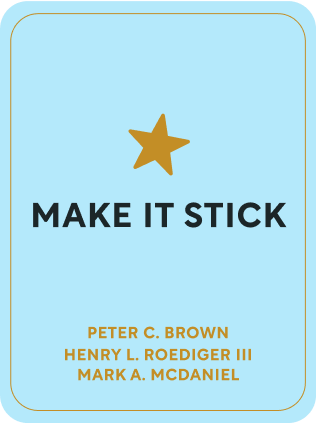

This article is an excerpt from the Shortform book guide to "Make It Stick" by Peter C. Brown, Henry L. Roediger III, Mark A. McDaniel. Shortform has the world's best summaries and analyses of books you should be reading.
Like this article? Sign up for a free trial here .
What exactly is learning comprehension? What role does comprehension play in learning? Is there anything you can do to comprehend and absorb new knowledge faster and more effectively?
In the context of learning, comprehension refers to gaining a deep understanding of the underlying principles in order to understand how they apply to different situations. There are two steps to improving your comprehension of the learning material: 1) rule learning and 2) structure building.
Learn more about how you can put them to use to help you learn and study more effectively.
Step 1: Rule Learning
When you’re learning something new, simply memorizing the information from your textbook or lecture notes leads to a shallow comprehension of the topic. Instead, you’ll gain a more meaningful understanding if you first identify the underlying principles—the rules. The rules are the common denominators among different examples and contexts, and they’ll guide you when you call on this knowledge to solve real-world problems.
People who are naturally adept at recognizing the key concepts in lessons and situations are rule learners. Rule learners know how to weed out irrelevant information to distill the main points.
By contrast, example learners remember specific examples, but they struggle to extract the underlying principles. As a result, they don’t know how to navigate new situations that don’t match the examples.
How Example Learners Can Improve
Example learners aren’t destined to struggle—there are strategies to improve.
One method is to study multiple examples at once—instead of one at a time—in order to more clearly see the common thread and extract the underlying principles.
Similarly, another method is to examine two different problems at once, in hopes of finding similarities or differences that illuminate the rules and help you reach each problem’s solution. For example, in one study, students are given two problems:
- An army attacking a castle must cross a moat, but the bridges are designed to explode if too many people cross at once.
- An inoperable tumor must be treated with radiation, but the amounts of radiation that are small enough to avoid damaging the surrounding healthy tissue aren’t enough to destroy the tumor.
The students struggle to find a solution to either question in isolation, until they look at both and try to discern the commonalities between them. In both problems:
- Something relatively large needs to reach a target
- Sending the full force all at once will cause disaster
- Smaller portions of the force avoid disaster, but they don’t deliver enough power to solve the problem
When students extract these similarities, they’re more likely to reach a solution in which they direct smaller forces at the target through different passages—multiple bridges or different angles of radiation—at the same time. Additionally, once students identify the underlying principles of the solution, they’re able to apply it to all different kinds of problems.
Step 2: Structure Building
After you’ve identified the rules, connect those principles with prior relevant knowledge. This process—called structure building—creates context, which is key to improving your learning comprehension. Structure building also develops mental models, which bring together interrelated concepts or skills into one fluid skill set. We’ll talk more about mental models next.
High structure builders are adept not only at rule learning, but also at recognizing when additional information adds values to their structures. Low structure builders, on the other hand, struggle with these skills.
How Low Structure Builders Can Improve
Experts are unsure whether high structure builders have an innate cognitive advantage, or pick up the skill intuitively.
Regardless of the explanation, low structure builders can improve using these methods:
- Regularly stop while listening to a lesson or reading a text to ask yourself what the main concepts are.
- Reflect on what you’re learning or how you applied the knowledge in a particular situation. Think about how you solved a problem, what you could have done differently, and how you can improve next time. Reflecting on a problem naturally crystallizes the main ideas.
Mental Models
Mental models group knowledge and skills together to create more complex skills.
For example, driving a car involves a broad range of knowledge and skills: You must understand traffic laws, know how hard to push the gas and brake pedals, and know how to turn on your windshield wipers without taking your eyes and mind off the road. At first, it feels like you’re juggling all these new skills at once, but over time and practice they all merge into a mental model that enables you to drive without consciously thinking about each individual action.
You can adapt your mental models to different situations—for example, applying your knowledge of driving a car to learn how to drive a bus or a big rig. Just like practicing a specific skill, when you practice your mental models in different contexts, you improve your ability to apply them in different situations.
Forming mental models is an essential step to achieving mastery in a skill or subject. People who become experts in their work—such as professional musicians or NBA players—practice thousands of hours until they’ve amassed an array of mental models for practically any possible situation. Then, when they’re playing a concert or a playoff game, they can agilely apply whichever mental model they need in any situation.

———End of Preview———
Like what you just read? Read the rest of the world's best book summary and analysis of Peter C. Brown, Henry L. Roediger III, Mark A. McDaniel's "Make It Stick" at Shortform .
Here's what you'll find in our full Make It Stick summary :
- How to understand and remember what you learn
- How a little forgetting helps you remember
- Why you’re not a good judge of how much you know






